Page Contents
AMD’s Latest RDNA 3 Architecture; Latest Gen GPUs; FSR 3, All Details Below
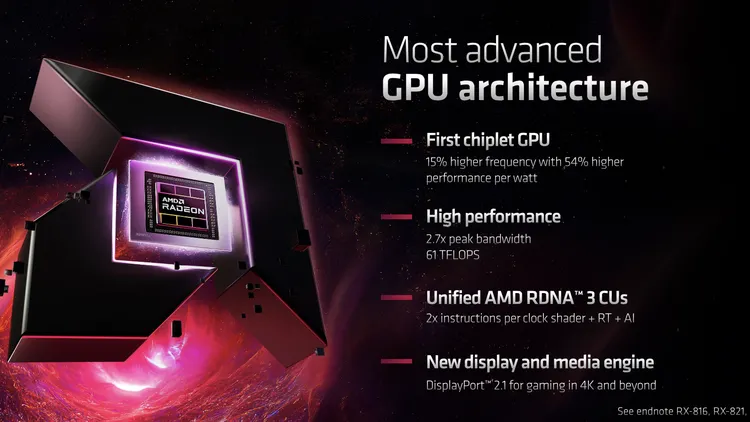
AMD has announced the first RDNA 3 graphics cards, the $999 Radeon RX 7900 XTX and $899 Radeon RX 7900 XT. These are high-end models designed to compete with Nvidia’s RTX 4090 and 4080, as the numbering scheme and price points indicate, but they include more significant changes than you might expect, such as FSR 3, meant to counter Nvidia’s DLSS 3 frame generation, and a completely new chiplet-based design.
RDNA 3 GPUs Availability and Cost Details

Both cards will be available on December 13th, along with AMD’s reference cards as well as board partner models. The price represents a huge increase over what the previous generation cards are now retailing for, the top spec card 6950 XT costs $849, whereas the base 6900 XT costs $679, despite having debuted at $1,099 and $1,000, respectively. The RTX 4080 from Nvidia, on the other hand, starts at $1,199, whereas the 4090 costs a hefty $1,599.
People have been eager to see how AMD’s next generation of cards would respond against Nvidia’s latest RTX 4000 series GPUs, notably because Intel’s freshly launched GPUs aren’t really a high-end competition. But first, let’s look at the cards itself before diving into the specifications. A typical unified GPU is divided into numerous interlinked portions by the chiplet design. RDNA 3 features a single 300mm2 5nm graphics compute die (GCD) and six 37mm2 6nm memory cache dies (MCDs). Because of this architecture, only the most crucial portions must be produced using a cutting-edge 5nm technology, which helps to enhance CPU yields while lowering costs and, ultimately, consumer pricing. However, it also needs a rapid interface between the several chips, which here operates at 5.3TB/s. This similar chiplet approach worked successfully with Ryzen, changing AMD from an optional extra to a booming behemoth, so it’ll be interesting to see if it works wonders in the GPU area as well.
Specs of the Latest Gen RDNA 3 Graphics Cards

So, about the specs – The RX 7900 XTX is the company’s flagship, described as a 4K gaming card that is up to 1.7 times quicker than the RX 6950 XT at that resolution. It includes 96 2.3GHz processing units and 24GB of GDDR6 (Not GDDR6X, more on that later) memory with a 384-bit memory bus interface. AMD looks to be primarily concerned with performance per watt in this case. AMD may have an efficiency advantage here, with a board power of only 355 watts compared here to 450 watts on the RTX 4090, albeit it does use more power than Nvidia’s basic RTX 4080.
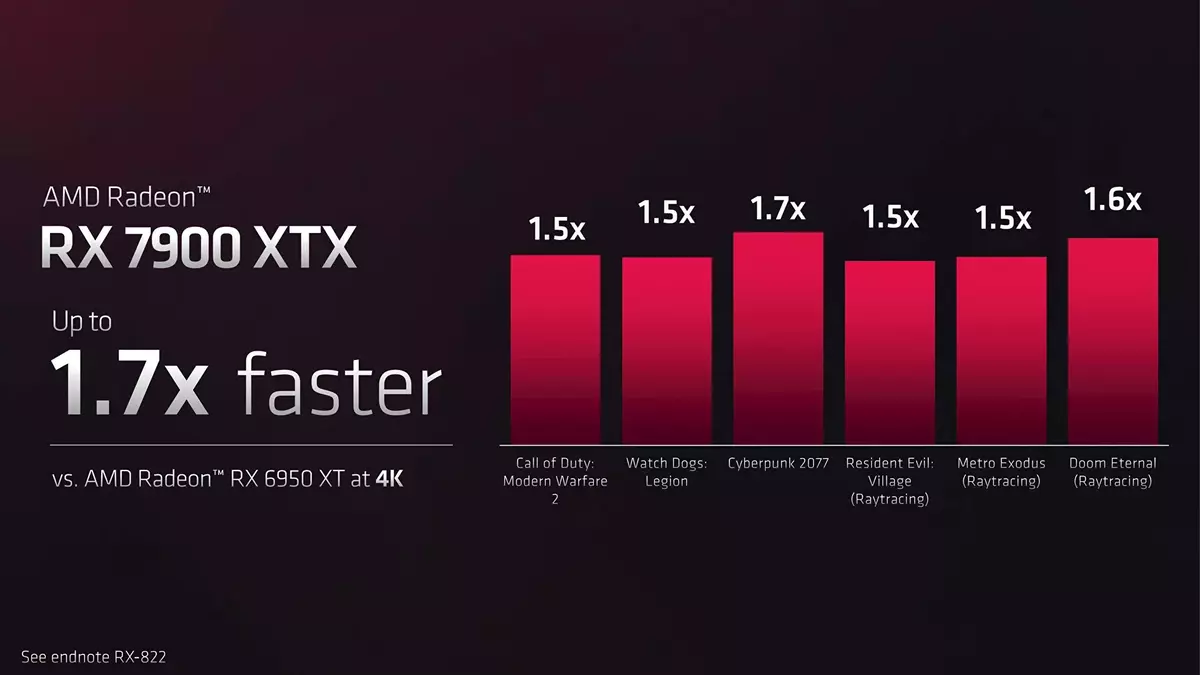
In terms of the 7900 XT, it appears that there is a significant gap between 7900 XTX and this GPU. The most noticeable change is the RAM capacity, which is 24GB on the XTX versus 20GB on the XT, with a correspondingly lower memory bus (384-bit vs 320-bit). The rated ‘game clock’ lowers from 2.3GHz to 2GHz, and the number of compute units drops from 96 to 84. However, when compared to the RTX 4090, both cards consume power, with the XTX drawing 355W and the XT drawing 300W. DisplayPort 2.1 and AV1 encode/decode are supported by both GPUs.
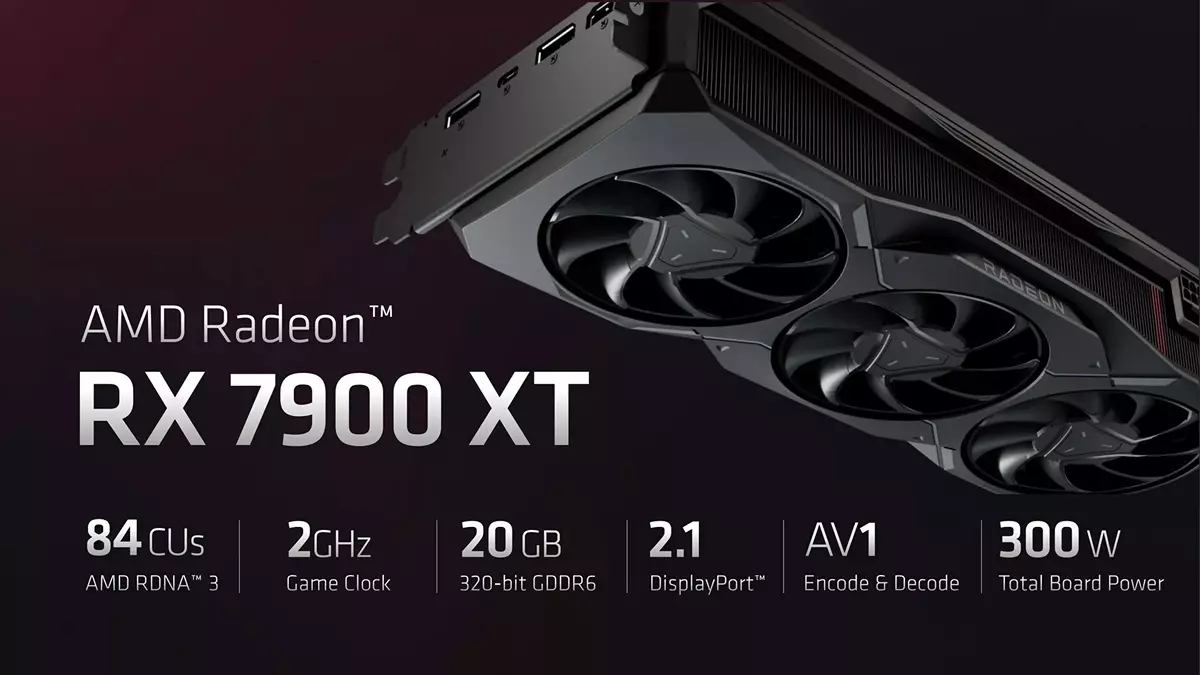
These cards’ display engines are insane, enabling DisplayPort 2.1 with up to 54Gbps of display link bandwidth, enabling for 8K 165Hz as well as 4K 480Hz with 12-bit color. To be sure, we’re a long way from such monitors, but it’s an excellent reply to Nvidia’s 40-series cards, which are confined to DisplayPort 1.4. Meanwhile, a dual media engine should help AMD’s shaky reputation in streaming and media encoding, including AV1 encode/decode capability, simultaneous AVC/HEVC encode/decode, and ‘AI Enhanced Video Encode,’ which looks exciting for streamers.

Here’s a table with all the specs of latest RDNA 3 and the previous gen RDNA 2 GPUs:
| Model | CUs | Clock Speed | VRAM | Memory Bus | Power Draw | Launch MSRP |
|---|---|---|---|---|---|---|
| RX 7900 XTX | 96 | 2.3GHz | 24GB | 384-bit | 355W | $999 |
| RX 7900 XT | 84 | 2.0GHz | 20GB | 320-bit | 300W | $899 |
| RX 6950 XT | 80 | 2.1GHz | 16GB | 256-bit | 335W | $1299 |
| RX 6900 XT | 80 | 2.0GHz | 16GB | 256-bit | 300W | $999 |
| RX 6800 XT | 72 | 2.0GHz | 16GB | 256-bit | 300W | $649 |
No additional Power Connectors nor Adapters required
AMD claims that it is utilizing GDDR6 memory rather than GDDR6X memory for both cards, primarily because it consumes less power. Both cards will require two standard 8-pin connectors, thus no additional power connectors nor adapters are required. Nvidia used a new 12VHPWR connector for the 4090, which has caused melting issues, which the company is presently researching.
FSR 3 Announced, 2x more Performance than FSR 2
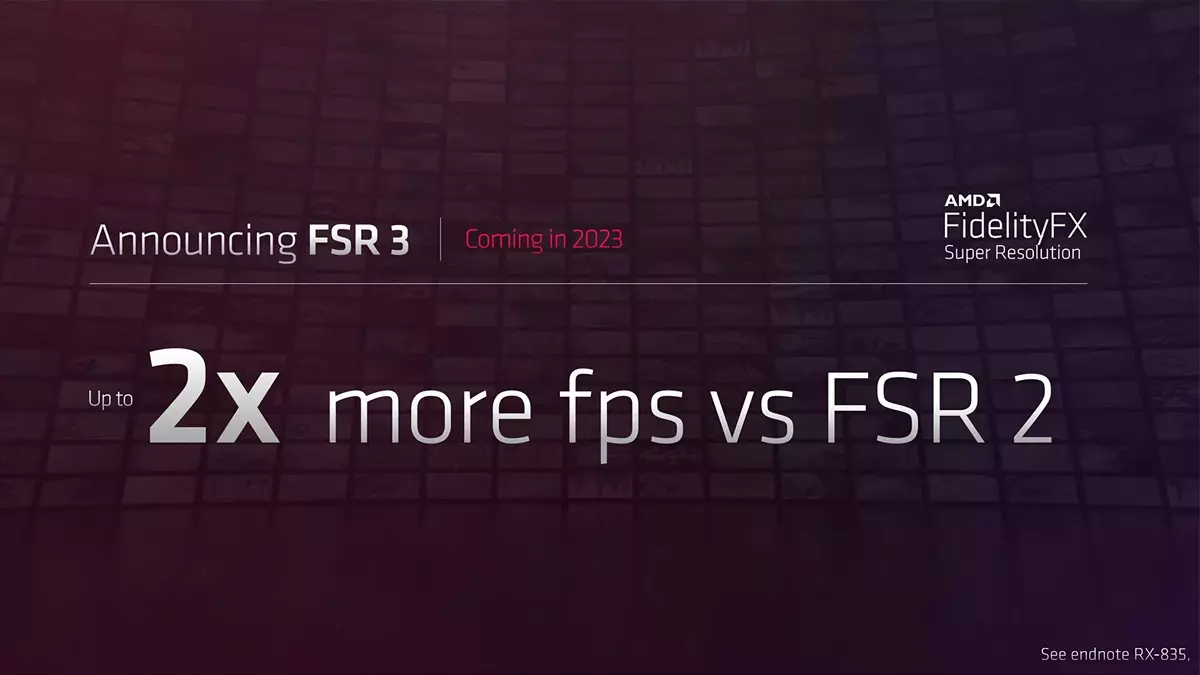
AMD launched FSR 3, which promises to more than double the frame rate of FSR 2. Based on this phrasing, as well as the presentation endnote that mentions “Fluid Motion Frames,” it appears to challenge the Nvidia “Frame Generation” with DLSS 3. This method minimally increases input latency while significantly improving visual fluidity by inserting AI-generated frames between the actual ones. Because RDNA 3 hardware does not appear to be utilized for this, meaning we can see this on older GPUs as well in future. That would offer it a distinct advantage over DLSS 3, which is now exclusive to the costly RTX 40 Series. FSR 3 will be released at 2023 according to AMD.
Some Gaming Benchmarks on 7900 XTX
AMD promises 62 fps in Cyberpunk 2077 at 4K with its 7900 XTX card with ray tracing with AMD FidelityFX Super Resolution (FSR) active – the company claims its new compute units contain next-generation ray-tracing innovation, which provides a 50 percent performance boost over its previous-generation cards. Still, that’s less than what we’ve observed with the RTX 4090 @ 4K with DLSS 2 / DLSS 3, so the 7900 XTX appears to be prepared to compete with Nvidia’s RTX 4080.
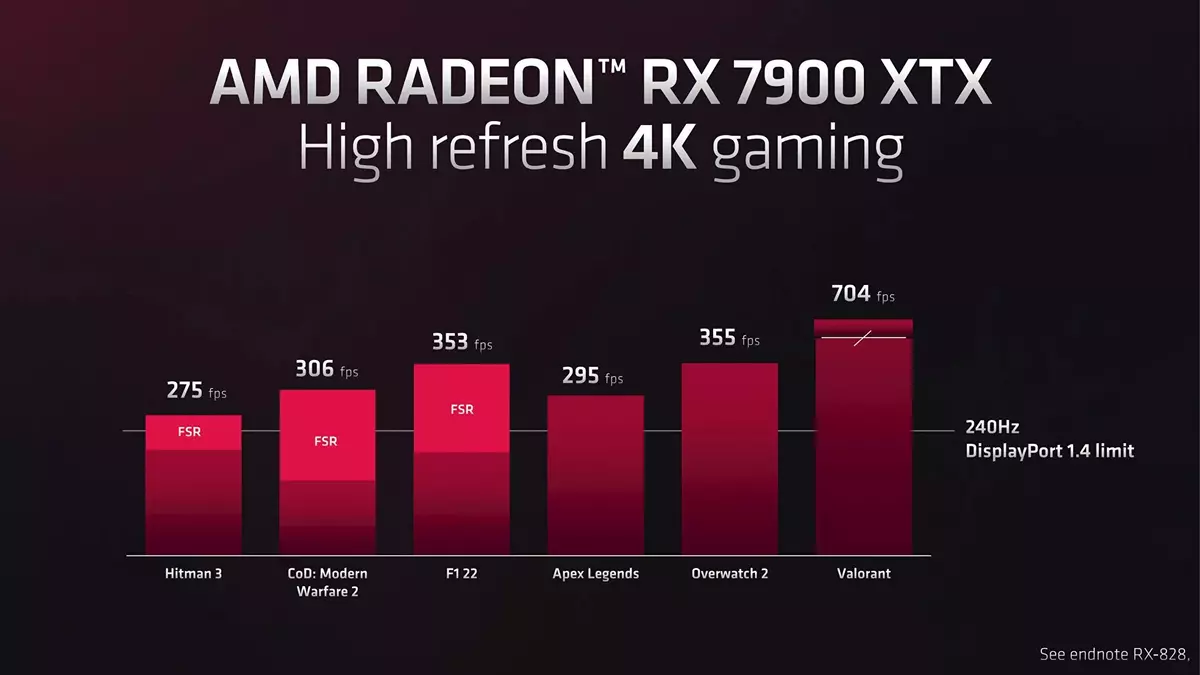
AMD published frame rate information for the RX 7900 XTX, but only as a comparison to the RX 6950 XT. They found that the new-gen card improved performance by 50 to 70% in COD: MW2, Watch Dogs Legion, Resident Evil Village (RT), and Metro Exodus (RT), 1.6x for Doom Eternal (RT), and 1.7x in Cyberpunk 2077. W we’ll have to wait till the cards arrive at reviewers to discover how well these GPUs operate in real-world testing compared to Nvidia’s Cards.
AMD claims that the 7900 XTX can exceed the frame rate limits on Apex Legends (300 fps), Overwatch 2 (600 fps), Valorant (833 fps) at medium-to-low settings on 1440p resolution. That’s when it was combined a very powerful system Ryzen 9 7950X cpu with 32GB of RAM.
That concludes AMD’s RDNA 3 Reveal! It’ll be interesting to watch how the new hardware performs as the December 13th release date approaches, as with a whole new chiplet design, there’s possibility for significant speed increases.
Are you excited for the Latest Gen AMD GPUs? Let us know below.
For latest news in your hands Follow us on Google News.



